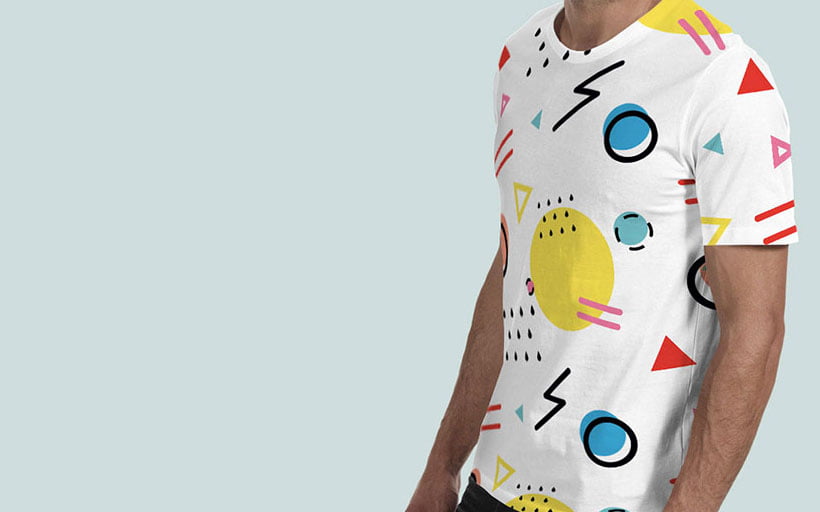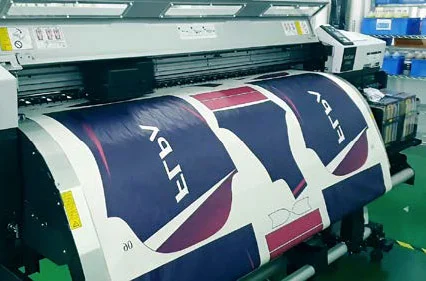From Typical to Digital: Recognizing the Advancement of Cloth Printing
The transformation of fabric printing from typical methods like block printing and stand up to dyeing to modern techniques such as display and electronic printing notes a significant shift in the fabric industry. Standard techniques, steeped in artisanal workmanship and cultural relevance, have actually gradually paved the way to digital developments that use unprecedented precision, effectiveness, and personalization. This change not only boosts production abilities but likewise aligns with expanding demands for sustainable techniques. Exactly how do these innovations affect the significance of fabric printing, and what might the future hold for this ever-evolving craft?
Traditional Fabric Printing Methods
In the very early stages of textile production, standard cloth printing approaches offered as the cornerstone of textile layout, offering both functionality and imaginative expression. Block printing, one of the earliest methods, included sculpting complex styles right into wood blocks, which were then dipped in dye and pushed onto textile.
Withstand dyeing, including methods like batik and tie-dye, utilized wax or other substances to avoid color from penetrating particular locations of the material. This approach created striking contrasts and intricate styles, usually imbued with cultural relevance. Stenciling, an additional traditional approach, involved cutting patterns into a product and using color via the openings, providing a less complex yet reliable way to produce recurring layouts.
These typical methods not only formed the fabric industry's very early development but also prepared for future innovations. Each technique reflected the social and regional qualities of its beginning, maintaining and sharing artisanal understanding with generations.
The Surge of Display Printing
How did display printing change the landscape of fabric layout? The development of display printing in the early 20th century marked a considerable separation from typical approaches, supplying unmatched flexibility and effectiveness. This technique involves pressing ink with a fine mesh display that has actually been stenciled with a style, enabling high precision and uniformity. Screen printing enabled designers to generate complex patterns and dynamic shades on materials, which were previously testing to accomplish with block printing or hand-painting techniques.
Among the crucial advantages of screen printing is its ability to duplicate complex layouts on a large range with amazing integrity. This scalability made it tremendously popular in the industrial textile industry, where mass manufacturing without giving up high quality is paramount. In addition, screen printing suits a wide variety of inks and dyes, increasing the palette of structures and coatings offered to developers.
Furthermore, the procedure is very versatile, suitable for different material kinds including cotton, silk, and synthetics. This versatility, incorporated with its cost-efficiency for huge runs, solidified screen printing's function as a keystone of modern textile manufacturing. Therefore, the surge of display printing revolutionized the market, pressing the borders of what was possible in textile style.

The Development of Digital Printing
Structure on the remarkable advancements brought by screen printing, the textile industry experienced another groundbreaking development with the advent of digital printing. Emerging in the late 20th century, electronic printing revolutionized the way designs are transferred onto fabrics, offering unprecedented flexibility and efficiency. Unlike traditional methods, which frequently required extensive setup and significant hand-operated treatment, digital printing uses computer-aided design (CAD) technology to create complex patterns directly onto the fabric with high accuracy.
This technology has actually allowed textile manufacturers to fulfill the expanding demand for customization and on-demand manufacturing. By getting rid of the requirement for screens and plates, digital printing decreases preparations and lessens product waste, making it a much more sustainable alternative. The capability to print intricate pictures and a variety check out here of colors in a single pass has actually opened brand-new innovative avenues for developers, fostering a rise in creative expression within the sector.
Moreover, digital printing sustains smaller set manufacturing runs, which is particularly useful for click to investigate particular niche markets and start-up fashion brand names. This technological leap has not just enhanced functional efficiency however also democratized accessibility to high-grade textile printing, establishing the stage for future advancements in fabric style and manufacturing.
Comparing Methods: Traditional Vs. Digital
While both digital and traditional printing methods have their own unique advantages, they differ substantially in terms of process, efficiency, and environmental influence. Typical towel printing, incorporating strategies like block printing and display printing, involves hand-operated labor and detailed workmanship.
In contrast, electronic printing utilizes advanced innovation to transfer layouts directly onto textile using inkjet printers. Digital printing is significantly quicker, allowing for fast turnarounds and just-in-time production, which reduces the requirement for huge supply storage.
From an ecological point of view, electronic printing is typically more lasting. It utilizes less water and generates very little waste contrasted to conventional approaches, which typically entail comprehensive cleaning and coloring processes. As a result, electronic printing is increasingly preferred in an age where environmental factors to consider are critical.
Future Patterns in Towel Printing
As the fabric industry remains to progress, future fads in cloth printing frequently direct in the direction of better integration of innovation and sustainability. One substantial trend is the enhanced application of electronic printing modern technologies. These advancements allow for greater precision, much faster production times, and the capability to produce intricate layouts that were as soon as tough with traditional methods. Digital textile printing is expected to dominate the click to read more market, driven by its efficiency and flexibility to consumer needs for customized and limited-edition products.

Furthermore, the consolidation of smart fabrics, which integrate digital elements into fabrics, is set to revolutionize the marketplace. These textiles can provide extra functionalities such as temperature level regulation, wellness surveillance, and interactive functions. As innovation proceeds to advancement, the crossway of electronic printing and clever fabrics will certainly open brand-new methods for practical and creative applications in fabric printing.
Conclusion
The evolution of cloth printing from typical methods to electronic technologies notes a significant change in the textile industry. While traditional strategies highlight artisanal craftsmanship and social heritage, electronic printing provides unequaled accuracy, efficiency, and personalization.
The improvement of towel printing from traditional techniques like block printing and stand up to dyeing to modern techniques such as screen and electronic printing notes a considerable shift in the textile market. Screen printing allowed designers to create intricate patterns and vivid shades on textiles, which were formerly challenging to accomplish with block printing or hand-painting methods.
Building on the amazing advancements brought by screen printing, the fabric sector experienced one more groundbreaking growth with the arrival of digital printing. Branded clothing. Traditional towel printing, including methods like block printing and screen printing, entails hands-on labor and elaborate craftsmanship. As technology proceeds to breakthrough, the crossway of digital printing and wise textiles will open brand-new opportunities for creative and functional applications in towel printing
Comments on “Exploring the Advantages of Sublimation Printing for High-Quality Fabrics”